When I reviewed Apple’s iPhone 6 two years ago, I wrote about how different reviewing an iPhone is compared to reviewing any other smartphone — or any other product at all, for that matter. A reviewer’s job is generally to present an overview of a product’s user experience, as well as to discuss strengths and shortcomings. The goal in doing this is to assist the reader in making a purchase decision. But with iPhones, this hasn’t been the case since the first-generation model. Either someone is going to buy an iPhone or he or she is not; reviews have almost no bearing on anyone’s decision.
Interestingly, while Apple’s new iPhone 7 is the first new number-generation iPhones to resemble their predecessors so closely in terms of design, they are also the first new iPhones to differ so dramatically in this way: reviews actually do matter. Apple’s new iPhones look so similar to last year’s models and to 2014’s models that people aren’t quite sure what to make of them.
Are they really “boring,” like many gadget blogs have been saying for months? Or are they truly as impressive as Apple’s marketing rhetoric and Apple bloggers’ reviews would lead you to believe? In this review, we’ll cut through the noise and see just how impressive or disappointing Apple’s new iPhone 7 and iPhone 7 Plus are.
First, let’s work our way through the narrative that guided coverage ahead of the new iPhones’ debut. Yes, they feature a design that is strikingly similar to Apple’s iPhone lineup for the past two years. Is that a bad thing? It depends on who you ask.
Apple strayed far from convention in 2016 and released two new phones that do not feature a dramatically different outward facing design. iPhone users are accustomed to seeing a brand new iPhone one year and an updated “S” version in the same housing the following year. Then, a fresh new iPhone is due to follow each new “S.”
This year, Apple didn’t exactly build an iPhone 6ss, but the new design of the iPhone 7 and iPhone 7 Plus really isn’t that new at all. The antenna lines on the back are a bit different, the cameras are new, the color scheme has been updated, there’s no 3.5mm headphone jack, and the regular home button has been replaced by a capacitive button. Beyond that, it’s the same design.
There are good arguments for Apple’s decision to keep the same design this year, and there are also good arguments for changing it. In the end, it obviously doesn’t matter. These are the new iPhones.
Many people were left wondering why Apple chose to reuse the iPhone 6 design again though, and it’s absolutely a valid question. Nothing is confirmed at this point, of course, but multiple reliable sources have reported that next year’s new iPhone — Apple’s tenth-anniversary iPhone — will feature a dramatic redesign. Rather than deal with the expense and logistical challenges that would be presented by launching a redesigned iPhone lineup in two consecutive years, Apple chose to tweak its earlier design.
The real question is, does it matter? Of course, there’s no wrong answer to that question.
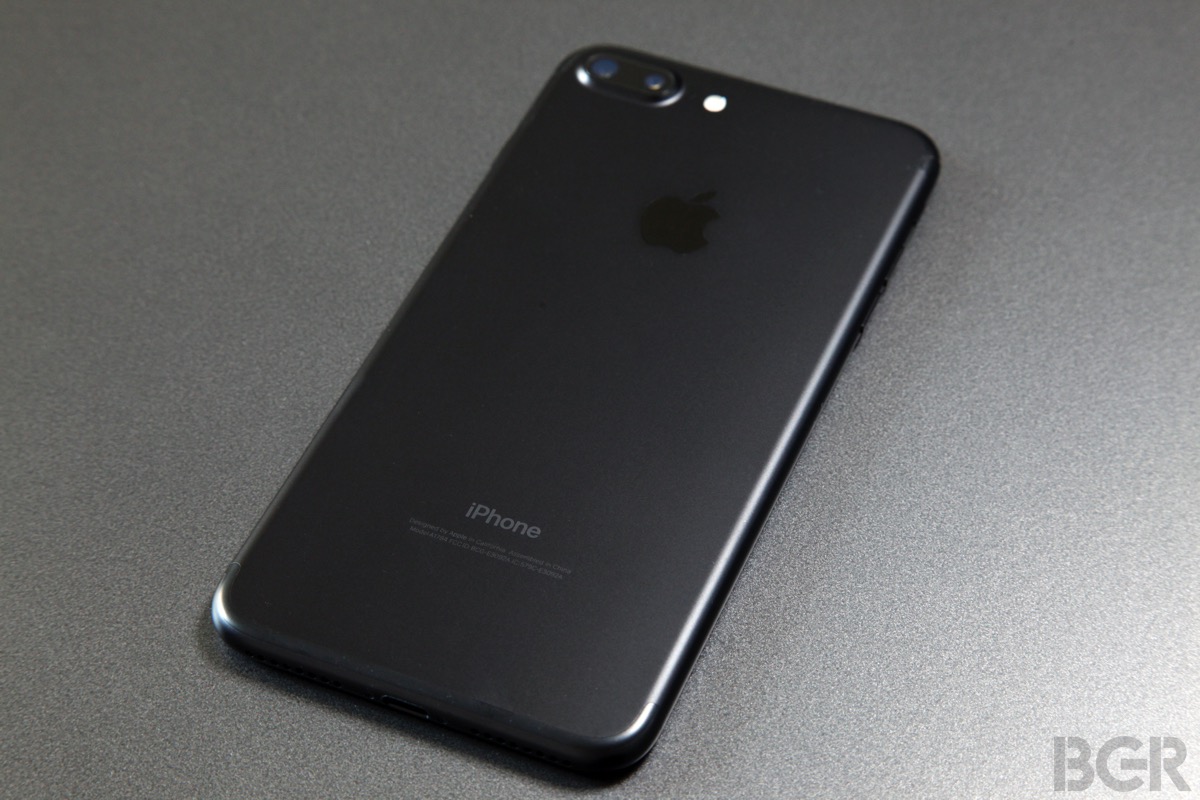
If you want a new iPhone but the idea of upgrading to a phone that looks just like your current smartphone gives you pause, then yes, it matters. If you want a new iPhone and performance and features are your biggest concerns, then it doesn’t matter. Or does it?
As I noted in an earlier article, I decided to switch from the smaller iPhone 6s to the larger iPhone 7 Plus this year. I did get a 4.7-inch iPhone 7 to review though, and I received it a day before my new iPhone 7 Plus. As my personal phone, I found that the shine wore off within just a few hours. I was already bored.
Now, there’s precious little question that the iPhone 7 is faster than the iPhone 6s, though the performance boost is nowhere near as noticeable as it was from the iPhone 6 to the iPhone 6s. The camera is also dramatically improved, as is the display. But it really doesn’t feel like a brand new phone, when you upgrade from the iPhone 6s. Instead, it feels like a better iPhone 6s.
If you have an iPhone 6, an iPhone 5s or an older model, the iPhone 7 is a tremendous upgrade that will blow you away. If you have an Android phone and you make the switch to the iPhone 7, you’ll love the sleek design and snappy performance. But after a few weeks, days or even hours, I think a lot of people are going to find that the upgrade from last year’s iPhone 6s or 6s Plus to a comparable iPhone 7 model just doesn’t feel like a big jump.
Is this going to be a problem for Apple? In the long run, I don’t think so. Bored iPhone users could sway purchase decisions toward the end of the iPhone 7 cycle and negatively impact sales to an extent, but next year’s massive redesign will instantly erase any memory of boredom among iPhone fans. Also, the iPhone 7 Plus is a more significant upgrade thanks to its new dual camera, so this problem will likely have less of an impact on phablet users. And if you jumped from the smaller model to the Plus like I did, you’re in for a great upgrade.
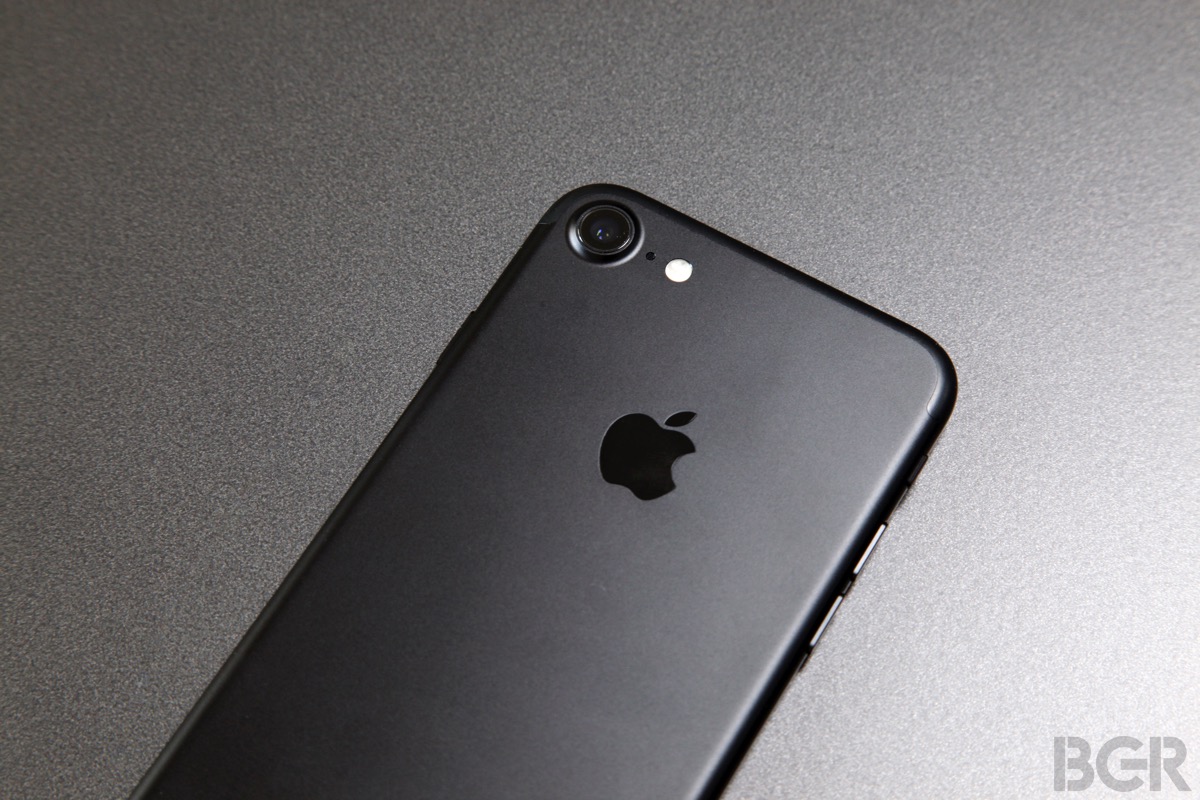
Since we’re all familiar with the hardware design at this point, let’s focus briefly on what has changed.
Beginning with the face of the phone, Apple’s updated displays on the iPhone 7 and iPhone 7 Plus are noticeably improved from last year’s models. They’re still LCD screens and they still feature the same resolutions — 720p for the iPhone 7, 1080p for the iPhone 7 Plus — but the quality of the screens is far more impressive. Colors are more vibrant and contrast is improved as well. In fact, a review from a display expert recently called Apple’s new iPhone 7 displays the best LCD displays in the world, adding that they are “visually indistinguishable from perfect.” If that’s not high praise, I’m not sure what is.
Beneath the screen you’ll find a completely redesigned home button that is no longer a conventional button. Instead, it’s a recessed surface that remains stationary when you press it. It feels like a normal button though, because Apple has introduced an advanced Taptic Engine that uses haptic feedback to simulate the sensation of a button press. And it’s pretty scary how good a job Apple has done.
I’ve handed the phone to a number of people and had them play with the home button for a few moments before telling them that it’s not actually a button. When I do, they all have the same puzzled look on their faces. Then I have them try to press the home button with a fingernail and it sets in that it is not actually a button that can be depressed.
It’s pretty scary how close the haptic feedback feels to an actual button press.
Features like raise-to-wake and the new 3D Touch home button are stepping-stones for next year’s new iPhone, which won’t have a home button at all. As we’ve seen described in patents and then again in recent reports, the Touch ID fingerprint scanner will be embedded beneath the display and the Taptic Engine will provide haptic feedback to simulate button presses.
Also new on the face of the phone is a second loudspeaker to create a stereo listening experience for the first time on an iPhone. You won’t notice it while looking at the phone, but it’s where the ear speaker has always been. Just like the HTC 10, the iPhone 7 and iPhone 7 Plus now have one front-facing speaker and one downward-facing speaker on the bottom of the phone. The result is a much better audio experience when watching video or playing music without connected headphones, though the sound quality isn’t quite as good as it is on the HTC 10.
And speaking of audio experiences and connected headphones…
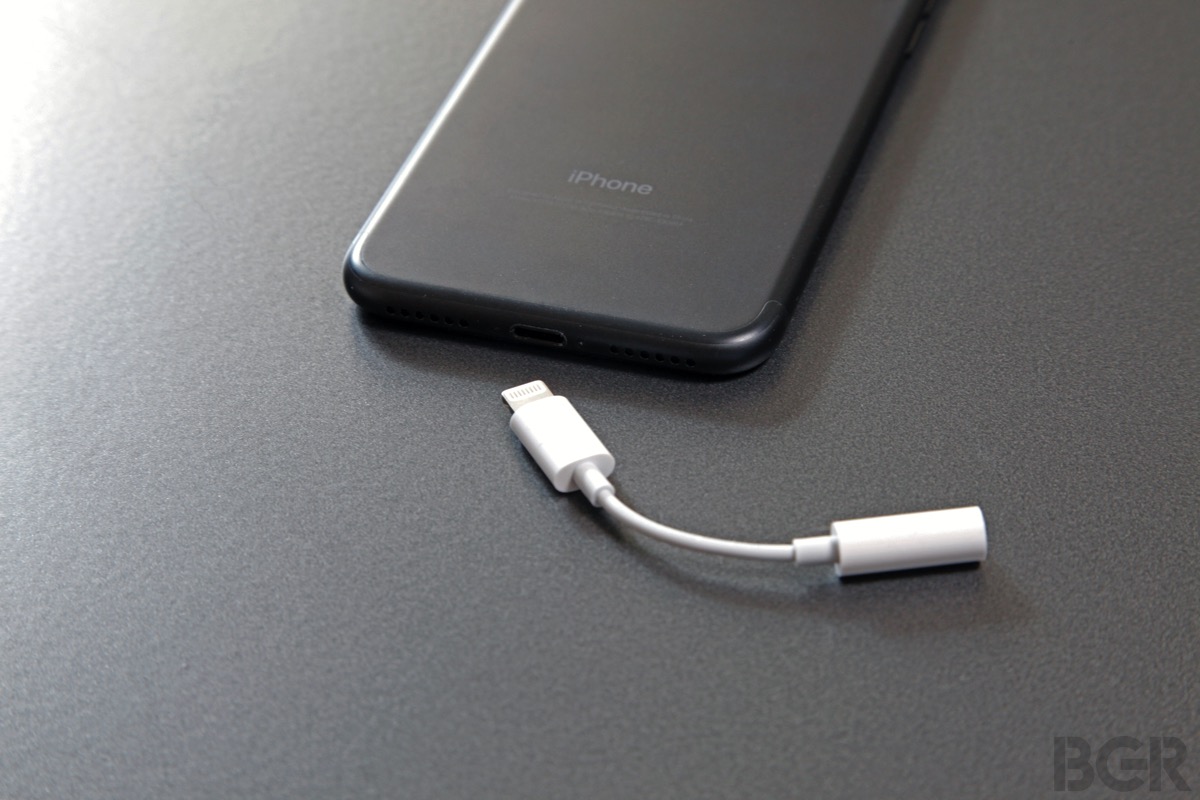
As has been covered very, very extensively online and by the mainstream media, Apple’s new iPhone 7 and iPhone 7 Plus do not have standard 3.5mm audio jacks like most smartphones do. Apple had some very good reasons for removing the headphone jack, though Phil Schiller’s “courage” explanation certainly isn’t one of them.
Instead, Apple removed the standard plug in order to free up space that was being occupied by a single-purpose legacy connector. Love it or hate it, the deed is done and we’ll likely never see another flagship iPhone ship with a 3.5mm audio port.
Is this really such a huge deal?
For some people, this is a big deal. Yes, Apple included an adapter in the box so that standard headphones with a 3.5mm plug can still connect to the phone. But people accustomed to listening to music through wired headphones while charging their handset are out of luck… unless they switch to wireless headphones or purchase a ridiculous third-party adapter.
https://twitter.com/zacharye/status/773972335275704324
Personally, I don’t think the loss of the headphone jack is a very big deal. In a few months the complaints will have vanished and a year or three from now, we won’t even remember the old days when smartphones had 3.5mm audio ports. What’s a bit aggravating in this case though, is that Apple’s solution is half-baked and incomplete.
An adapter solves the issue of compatibility with older headphones, but what about charging while listening? The inclusion of wireless charging support will resolve this problem to an extent — wireless charging isn’t always available or convenient yet — but Apple’s iPhone lineup won’t support wireless charging until next year at the earliest.
The iPhone 7 and iPhone 7 Plus do support one new wireless technology, however. Apple introduced a new “W1” chip in the iPhone 7 series and in the innovative though hideous new AirPods that use Apple’s smart wireless technology to pair and the latest Bluetooth protocol to stream. Apple says its new tech is powerful enough to carry high-quality audio but also incredibly energy-efficient.
Also of note, there is some good news to come out of the headphone jack debacle: removing the port was one of several major changes Apple made in order to achieve an IP67 dust- and water-resistance rating. That means the iPhone 7 and iPhone 7 Plus can be submerged under several feet of water for up to 30 minutes and still work just fine. They’re actually far more water-resistant than that, and we’ve already seen dunk tests in up to 35 feet of water. We’ve also seen people snap photos while their iPhones were submerged.
Should you plan on using your new iPhone 7 or iPhone 7 Plus underwater? It’ll probably survive if you do, but it would be best to avoid making a habit of it. The phone was designed to withstand rain, splashes, sprays and quick accidental dunks, but that doesn’t mean you should tempt fate.
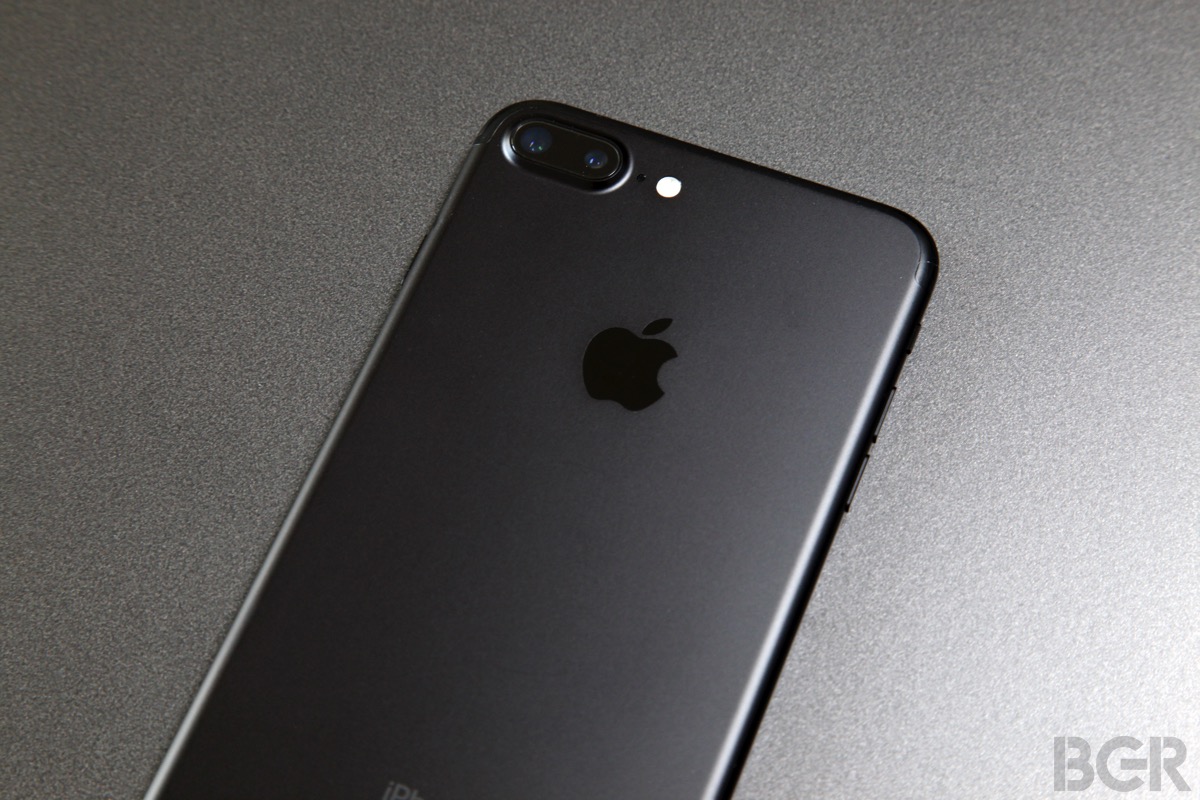
The other main hardware changes are found around back, where Apple has redesigned the iPhone’s antennas so that only two “antenna lines” are needed, one near the bottom of the phone and a second that runs across the top. Apple also included new cameras on the front and back of the iPhone 7 and iPhone 7 Plus, and they represent one of the biggest upgrades the iPhones received in 2016.
Both new models share the same upgraded 7-megapixel front-facing camera. Around back, Apple’s iPhone 7 gets a new 12-megapixel sensor that captures images 60% faster and is 30% more energy-efficient than the rear camera on the iPhone 6s. It has a 6-element lens, an f/1.8 aperture and a new image signal processor with twice the throughput of Apple’s previous-generation ISP. It’s also supported by what Apple is calling a Quad-LED True Tone flash, which includes four different LED bulbs to improve brightness and tone.
Thankfully, the iPhone 7 camera also gets optical image stabilization this year. In 2014 and 2015, only the larger Plus model iPhones had OIS.
The bigger iPhone 7 Plus gets a new dual-lens setup that includes two separate cameras positioned side by side on the back of the phone. One is the same 28mm camera as the rear camera in the iPhone 7, while the second has a 56mm telephoto lens. The new setup provides two main features that most smartphone cameras do not support.
First, the iPhone 7 Plus has 2x optical zoom. A tap on the screen switches the main camera from the 28mm lens to the 56mm lens, allowing the shooter to zoom in without any loss of image quality. Both the iPhone 7 Plus and iPhone 7 have 10x digital zoom as well, and zooming can now be done either by pinching or by tapping the new zoom button on the 7 Plus and then spinning the dial that pops up either to the right to zoom in, or to the left to zoom out.
Second, the telephoto lens captures depth information when taking a standard photo. Along with Apple’s upcoming iOS 10.1 update, the Plus camera will be able to produce a “bokeh” effect that blurs the background and simulates a photo captured by a DSLR camera.
The dual-camera setup isn’t just for zoom and bokeh, however. Every press of the shutter button on the iPhone 7 Plus actually captures two images, one with the 28mm lens and one with the 56mm lens. Data from both images is then fused behind the scenes to create a single photo. Of note, the wide-angle lens has OIS while the telephoto lens does not.
You can read more about the cameras and see photo samples in this post.
The bottom line is this: there have never been better cameras on an iPhone than these cameras. In fact, they’re at least as good as the camera Samsung uses on its Galaxy S7 and Galaxy Note 7 phones, which has been the best smartphone camera in the world since March of this year.
Personally, I can’t pick a clear winner between Samsung and Apple. Photos captured by the iPhone 7 or 7 Plus in some lighting conditions look better than the same photos snapped on a Galaxy S7 or Note 7, while the S7 and Note 7 clearly have the edge in other lighting conditions. All four of these phones feature cameras capable of capturing breathtaking photos and stunning video, making all of them fantastic choices for anyone who counts camera quality among their priorities when choosing a smartphone.
The final big change regarding the iPhone 7’s design is the two new colors Apple introduced this year.
Just one year after adding rose gold to its palette, Apple has added a pair of darker color options on the iPhone 7 and iPhone 7 Plus. The first is black, which replaces space gray. The black iPhone 7 models feature a smooth finish that is similar to the other three available colors (silver, gold and rose gold), but obviously much deeper.
Next up is Apple’s new “Jet Black” color, which has been a topic of much debate. Some people are upset that it’s next to impossible to buy a jet black iPhone right now. Others are angry because the new color is only available on the more expensive 128GB and 256GB iPhone models. Of course like most complaints, these will quickly fade as we move further from launch. But one issue will remain: Jet Black was built to fail.
The iPhone 7's stunning jet black finish goes through a nine-step process of anodization and polishing before being slathered with courage pic.twitter.com/7iaH86fi9T
— Zach Epstein (@zacharye) September 20, 2016
Apple’s new Jet Black iPhones are stunning. The smooth high-gloss finish reflects light and captures different colors as it does, but it also captures some things that are far less desirable like scratches, scuffs, grease and grime. In fact, the problem is so serious that Apple had to include a disclaimer on its website:
The high-gloss finish of the jet black iPhone 7 is achieved through a precision nine-step anodization and polishing process. Its surface is equally as hard as other anodized Apple products; however, its high shine may show fine micro-abrasions with use. If you are concerned about this, we suggest you use one of the many cases available to protect your iPhone.
If you buy a Jet Black iPhone 7 or iPhone 7 Plus, it will get scratched up. Period. If you put a case on it, it will still get scratched up as dust and dirt inevitably works their way in between the case and the phone. There’s simply no way to avoid it. So if the idea of buying a phone that will begin showing scuffs and scratches within a few hours of your purchase is off-putting, definitely purchase a different color.

Moving inside the new iPhone 7 and iPhone 7 Plus, Apple made some serious internal improvements.
The new iPhones have twice as much storage as last year’s models. The 16GB iPhone is no more, having been replaced at the entry-level by a new 32GB storage option. The mid-tier models include 128GB of storage, and the top-tier iPhone 7 and iPhone 7 Plus ship with 256GB of internal storage.
Where the smaller iPhone 7 is concerned, the storage bump comes at no additional expense. Pricing remains $649 for the entry-level model, while the 128GB and 256GB versions cost $749 and $849, respectively. The larger iPhone 7 Plus models are more expensive than the 2015 iPhones they replace, however. Pricing at each tier has been increased by $20, so the phones cost either $769, $869 or $969 instead of $749, $849 and $949, which is where pricing has been for the past two years.
Why the extra $20 when prices haven’t increased for smaller iPhone 7 units? The answer likely lies in the new camera modules as well as the additional RAM in the Plus model compared to the smaller version. Apple’s 4.7-inch iPhone 7 has 2GB of RAM just like the iPhone 6s and 6s Plus, but the iPhone 7 Plus has 3GB. Don’t expect any huge all-around performance benefit from that extra gig of RAM, though. Instead, the additional RAM is there to assist with photo processing since the dual camera setup captures so much more data than a single-lens camera.
Running the show inside the iPhone 7 and iPhone 7 Plus is a new A10 Fusion chipset designed by Apple. The 64-bit chip features two high-performance processor cores that are 40% faster than the A9 chip that powers the iPhone 6s and 6s Plus, and two high-efficiency cores that consume one-fifth as much power as last year’s A9. The result is blinding speed when the phones need to do some heavy lifting, and improved battery life during normal operation.
The A10 Fusion chip also packs a six-core GPU that is 50% faster than the A9’s GPU and yet consumes only two-thirds as much power.
Thanks to the new chipset and larger batteries in both iPhone 7 models, this year’s new iPhones are faster than last year’s models while also offering better battery life. Apple says the iPhone 7 lasts an average of 2 hours longer per charge than the iPhone 6s, while the iPhone 7 Plus outlasts the iPhone 6s plus during typical use by an average of one hour.
Those are big improvements in terms of percentages, but in reality the user experience is largely unchanged. The Plus model will still go well past a full 24 hours without needing to be recharged, while the smaller model absolutely will not.
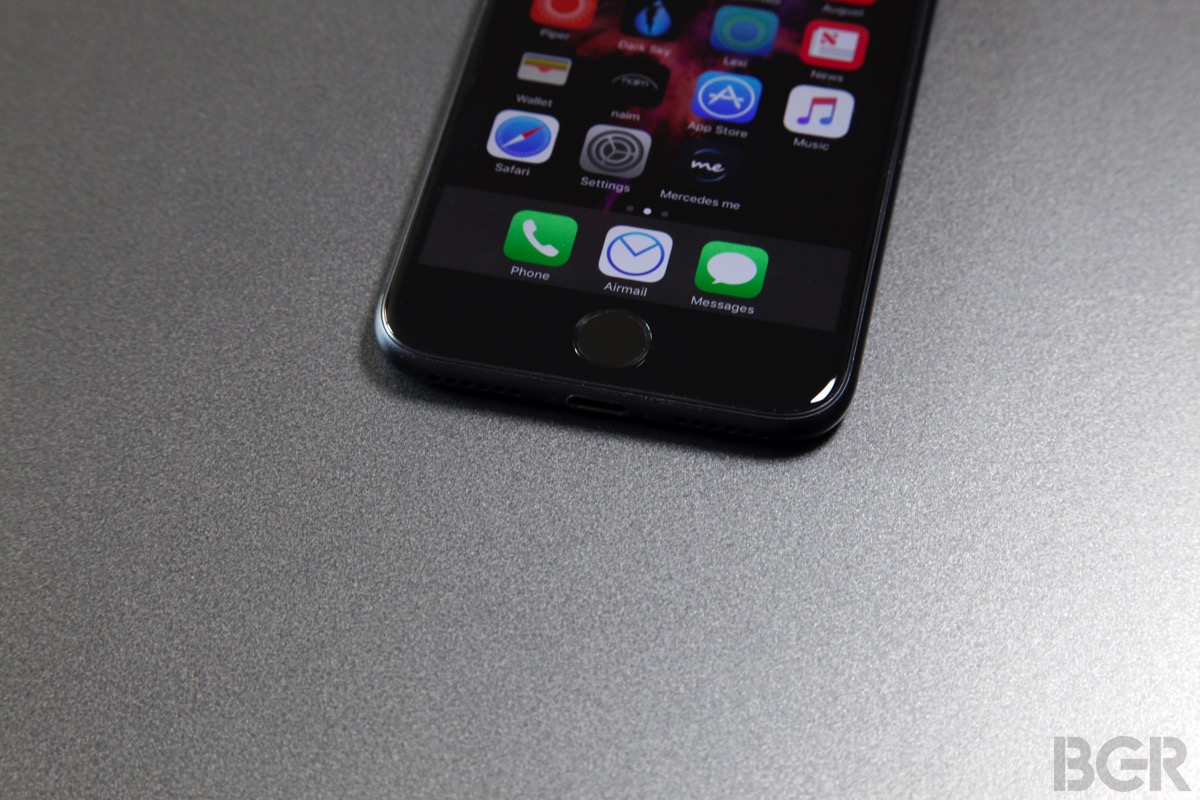
iOS 10 is the rest of the story, though Apple’s latest major iOS update obviously isn’t unique to the iPhone 7 and iPhone 7 Plus. Unlike Android, Apple has managed to create a system that allows it to push operating system updates directly to end users. As a result, iOS 10 was available the very same day it was released on all compatible devices, including ten different iPhone models, eight different iPad models and the most recent iPod touch.
For those keeping score, the oldest iOS device that received Apple’s iOS 10 update was released just over four years ago. Do any four-year-old Android phones have Nougat yet? Marshmallow?
Apple’s new iOS 10 software brings with it a host of new features that further enhance the iOS experience. As has been the case for the past few years, Apple focused on refining and enhancing existing features with iOS 10. The resulting operating system is dramatically improved and enhanced, but don’t expect much in the way of innovative new features.
Highlights in iOS 10 include a new Messages app that’s packed full of features and now supports its own App Store, a new lock screen, redesigned widgets, a revamped notification system that lets you respond to messages right from within a notification on any screen, a new Photos app, big Maps updates, bigger Siri updates, a dramatically improved Apple Music experience, Quick Type enhancements including emoji recommendations, and plenty more.
And of course, iOS 10 continues to be supported by the world’s leading third-party app ecosystem.

Apple’s new iPhones are the best iPhones the company has ever made. Obviously. The same can be said of every new iPhones that are released. But what separates this year’s iPhone 7 and iPhone 7 Plus from their predecessors is where things get interesting. Whittled down to its simplest terms, Apple’s new iPhones are an “S” update, making this the first time Apple has ever released S updates in two consecutive years.
iPhones get big performance boosts and nifty new features each and every year, but the external design is what separates number updates from S updates. Yes, there are some subtle design changes on the iPhone 7 series compared to last year’s models. But as far as most people are concerned, the iPhone 7 sports the same housing Apple used last year and the year before. Even the dimensions are identical, down to the millimeter.
So the question becomes, are you willing to purchase another S update?
If you currently have an iPhone 6, an iPhone 6 Plus or any earlier iPhone model, or if you’re switching from Android to an iPhone, this is truly a no-brainer. The performance boost when jumping to the iPhone 7 and iPhone 7 Plus will blow your mind — they’re the fastest phones in the world. Add in the incredible new cameras, the gorgeous new displays, twice as much storage and all the other new features Apple mixed in, and you’ve got yourself the best all-around smartphones on the planet.
The real question for many users will be whether or not they should upgrade from an iPhone 6s or iPhone 6s Plus.
If you use an annual upgrade plan through your wireless carrier or through Apple, again, you should obviously upgrade. These phones are amazing. If you’re buying them outright though, you have a difficult decision to make. These are not “boring” iPhones by any stretch of the imagination but as I mentioned before, I did get bored very quickly when moving from an iPhone 6s to an iPhone 7. It’s an S upgrade. Again.
Another S upgrade?! Is Apple doomed?! Should Tim Cook be fired?!?
No. The iPhone 6/6 Plus cycle was the biggest smartphone cycle in history, and tens of millions of people now have 2-year-old phones that need to be upgraded. In the iPhone 7 or iPhone 7 Plus, they’ll find an upgrade that will absolutely knock their socks off. The same goes for people coming over from a different manufacturer and switching to an iPhone.
Then, next year, you get the massive design overhaul you’ve been waiting for. You get a gorgeous new OLED display that takes up more of the phone’s face. You get an innovative new all-ceramic housing in sleek new colors, perhaps. You get a slimmer design with wireless charging and no home button. You get an even better 3D Touch experience with an invisible TouchID fingerprint scanner embedded in the display. And of course, you’ll also get a huge boost in power and performance.
In the meantime, all you have to tide you over are the two best smartphones in the world.








